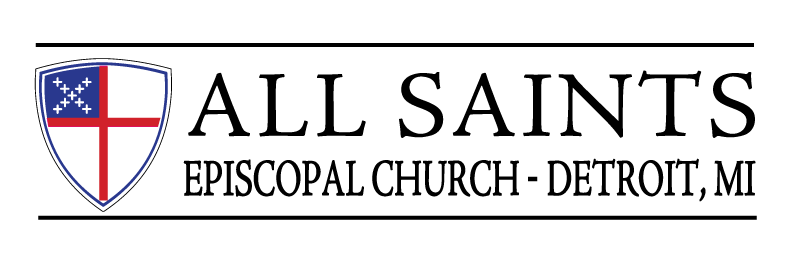The Episcopal Diocese of Michigan was organized in 1832 by Episcopal parishes in the territory of Michigan (which included present-day Wisconsin). From its beginning St. Paul’s Church in Detroit (the current Cathedral) served as the see of the diocese, and the early bishops served as rector of St. Paul’s. When Michigan became a state the boundaries of the diocese were fixed as the boundaries of the state. As the church grew the bishops found it difficult to administer such a large area, and the parishes farther from Detroit desired a bishop closer to their own areas and more attuned to their local needs. To address these concerns the diocese eventually was divided three times. In 1875 the western half of the Lower Peninsula became the Diocese of Western Michigan. In 1895 the Upper Peninsula became the Diocese of Marquette (later renamed Diocese of Northern Michigan). Finally in 1995 the northeastern Lower Peninsula, Saginaw Valley and Thumb areas became the Diocese of Eastern Michigan. As a result, the current Diocese of Michigan includes only the Detroit Metropolitan Area and adjacent regions as far west as Lansing, Jackson, and Hillsdale.
In the nineteenth century, the diocese was concerned with the strains of carrying the gospel to a region rapidly going through the development from frontier to a more settled state. As early as the 1840s the church began to develop urban missions in Detroit to African Americans (St. Matthew’s) and laborers (Mariners’ Church). The 1850s saw the development of missions in the lumbering regions of the Saginaw Valley and the mining regions of the Upper Peninsula. The problem of supporting churches in poor farming areas was a constant concern.
The major emphasis of the diocese changed in the twentieth century with the rise of the automobile industry. Throughout the century the fortunes of the diocese were closely tied to the development and decline of the industry in the Detroit area. The rapid rise in Detroit’s wealth and power in the 1910s and 1920s were reflected in a diocese that became one of the largest and most influential in The Episcopal Church.
The suburbanization of the 1940s and 1950s led to a great emphasis on building and physical expansion in the diocese. The decline of Detroit in the 1970s and 1980s saw the diocese cutting back and closing parishes. At the same time that external forces were buffeting the diocese, struggles within the church caused much controversy. Early in the 20th century, Bishop Williams led the diocese to confront the church’s responsibility to labor. Later Bishops Emrich and McGehee challenged the community with issues of civil rights, peace, and justice. Beginning in the 1950s the diocese debated the role of women, and later gays and lesbians, in the church. And in a church that defines itself chiefly by worship, the question of liturgical change also aroused some disagreement.
The bishop is the chief executive and pastor of the diocese. The chief administrative bodies of the diocese include the diocesan convention, which meets annually to set policy and approve the diocesan budget. During the year, the Diocesan Council meets on a regular basis as the representatives of the convention to carry out the work of the diocese between conventions working with the bishop.
Since 1920 the executive council (since 1995 called diocesan council) has met between conventions to continue its policy-making role. The standing committee provides advice and counsel for the bishop. Since 1875, the trustees of the diocese have managed the diocesan assets. The chancellor has since 1904 provided the bishop with legal counsel. The parishes in the diocese have been divided into regional groupings called at various times convocations, archdeaconries, area councils, and currently deaneries, that have varied over the years in number, names and responsibilities.
Through our Outreach Ministry we have partnered with several local and national agencies, such as Crossroads of Michigan, Forgotten Harvest, Episcopal Relief and Development, and the Episcopal Church’s United Thank Offering, to name a few. CLICK HERE to learn more.
Source: The Episcopal Diocese of Michigan. (2013). Retrieved from https://web.archive.org/web/20131021082112/http://www.edomi.org/history-identity.html
